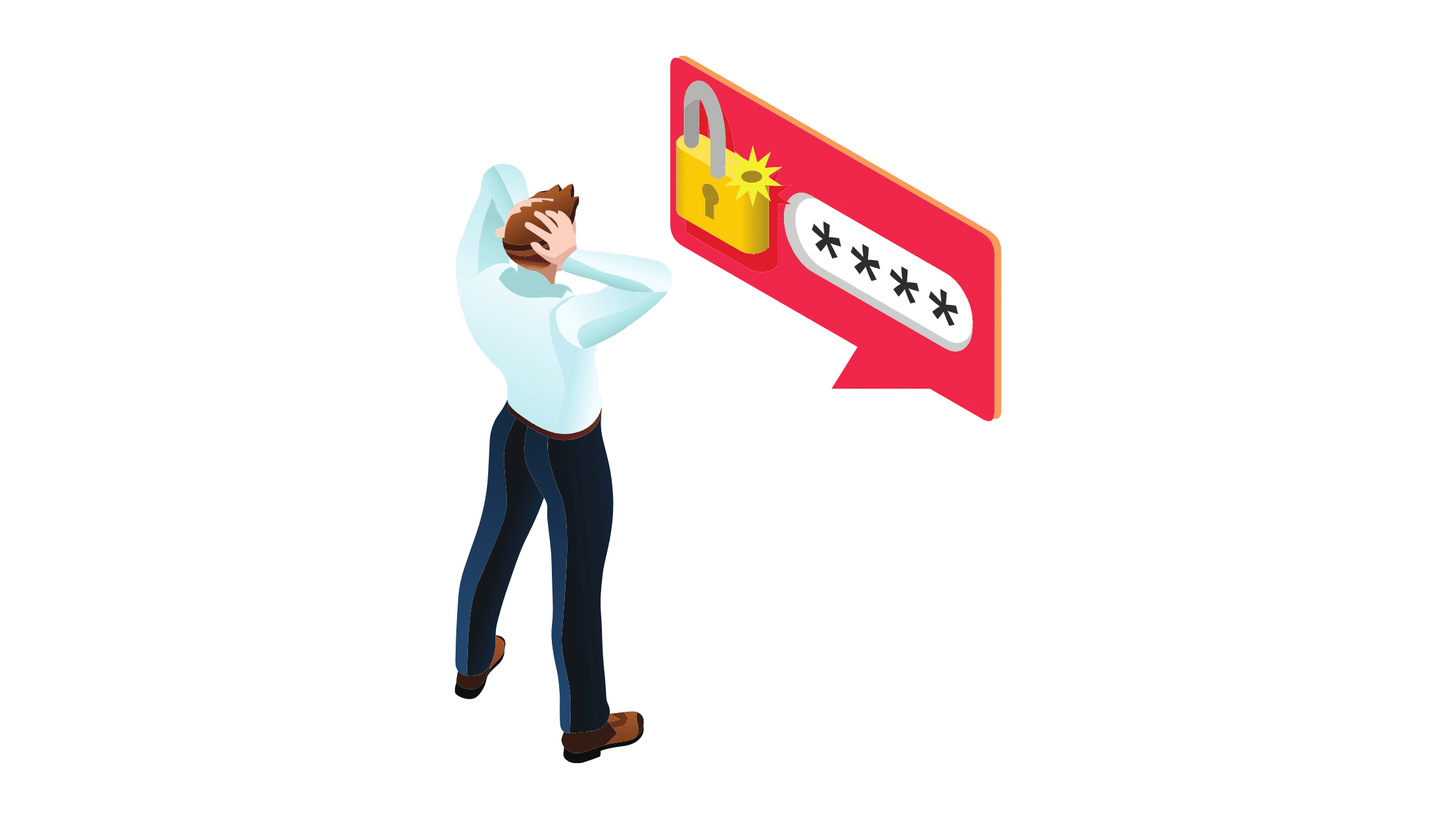How to Stop Other Bloggers From Stealing Your Content

Written by Casey Botticello
Disclosure: Some of the links below are affiliate links, meaning that at no additional cost to you, I will receive a commission if you click through and make a purchase. Read our full affiliate disclosure here.
Nothing stings more than having your hard work stolen for you. While the content you create and publish online is yours, there is unfortunately not much stopping people from stealing it. Anyone can simply copy your content and use it for whatever they want.
And the most painful part? Most often, it’s other bloggers stealing from you! That’s right.
Lazy, untalented, or absentminded bloggers sometimes revert to stealing from others. Whether because they can see your content is of high quality and want to co-opt it or because they are unable to create original, authentic content themselves, the damage is the same.
And bloggers everywhere are trying to figure out how to stop other bloggers from stealing their content.
From copying and pasting your work directly onto another website to revising and editing it first or converting your ideas and opinions into a new format altogether, blog content theft happens every day.
So, what can you do to prevent thieves and plagiarists from stealing your content, and who can you turn to when it happens to you?
Plagiarism and intellectual property theft are big problems faced by content creators, writers, and bloggers. And while there’s not much we can do to stop it from happening altogether, there are things we can put in place to detect when it’s happening to us and some blog content protection measures we can take to prevent it from happening too often.
This article will help you to learn how to stop other bloggers from stealing your content. We’ll look at what they do with your hard work, how to catch them, and what you can do to protect your digital property.
Stolen Content: a Grand Digital Theft

With more than 2 million blog posts published daily, it’s no wonder much of their content gets stolen. The digital nature of online blog content means that anyone can access it, and many people do – not only to read but to copy.
We’re not talking about a line of text or a referenced quote used in other blog posts; we’re referring to entire posts (and sometimes whole websites) being copied and used without our permission. Here are some of the most stolen blog content types:
- Text – This is by far the most frequently stolen blog content asset. From passages to entire posts, crooks simply copy text content straight from the blog and paste it into their own posts or use it in other publications.
- Site design, logos, and layouts – An often overlooked content type stolen frequently is your blog layout and design – even logos. From fonts, colors, and styles to shapes, formats, and whole themes, theft of these elements happens more than you think.
- Ideas – Most legitimate bloggers use their creative talents, experience, and blog SEO know-how to develop their own ideas and thoughts. That’s what makes blogging so lucrative. But some people choose to skip the creative process altogether, opting to steal and replicate other bloggers’ ideas without doing much.
- Images – While copywrites only go so far, people are stealing blog image and video content in growing volumes. Despite platforms and marketplaces offering vast libraries of visual content that can be used in blogs, custom-made and designed graphics, images, and clips are being snipped, screenshot, ripped, copied, and streamed daily.
How Other Bloggers Steal Your Blog Content

A simple right click, ‘copy’ and ‘paste’ is all it takes to get hold of your work. Other techniques involve more advanced methods that make it both easier to steal content and tougher to track down the thieves.
Here are how some shady characters get their hands on and then use your content. Some methods are more complex than others, but they all have one goal: To steal from you.
Direct Plagiarism
Plagiarism involves taking text or content created by somebody else and then using it as your own without the knowledge or permission of the original owner. Plagiarism is the number one problem with stolen content, with countless blog posts, articles, and content containing stolen text.
Thieves simply copy the text they want and paste it onto their own websites or blogs. Many don’t even bother to change your original content at all. Google despises plagiarism but sometimes isn’t able to spot it.
Blog Scraping
Scraping is a popular technique bloggers use to scan and extract large volumes of blog content and website data. Scrapers use tools and automated software to identify and collect this data, enabling them to replicate everything elsewhere.
This means that scrapers can be used to copy whole posts or websites (collecting other data in the process) and then reproduce them afterward. Scrapers can also be configured to hoover up other valuable content while ignoring the stuff they don’t want.
Hacking
Some thieves prefer to hack into blog websites to get their hands on already-protected content or to steal valuable private information and user data. This is the more serious type of blog content theft, as hackers are after sensitive data and often do major damage to your blog while they’re ransacking it.
Scraping and direct plagiarism are easy to execute, affordable, and tough to track, making them popular options. Hacking is a more complex cybercrime that is usually used for more than simply stealing content.
Finding Blog Content That Has Been Stolen

First up, in figuring out how to stop other bloggers from stealing your content, you’ll need to determine if any of your blog content has been stolen already and, if so, which content has fallen victim to theft. You will also need to understand where it is being published and what the thieves are doing with it. Here are some of the steps you can take to set up an online ‘early warning and detection’ system that will alert you to any of your content being stolen or used without your permission.
Google Alerts
Google Alerts is a great tool for setting up a warning system to notify you if your content is being used. You can set up alerts to notify you every time your website name, URL, or content is used by someone else.
Create an alert by entering a portion of your content for it to search, and it’ll let you know if a) your content is already being used and by whom or b) alert you whenever someone posts something containing the content you’ve created. Both setup processes are pretty similar to setting up a normal Google alert.
Plagiarism checkers
There are many free and paid plagiarism checkers which are excellent at looking for your content online. These tools use search engines to scour and match any duplicate content to the copy you entered into the text box.
Tools can tell you where this content exists and how much of your content has been used elsewhere online. Tools like Grammarly and Copyscape are excellent starting points.
Do a manual Google search
While manual searches can be labor-intensive, they’re arguably the best way for you to weed out content being used without your knowledge or permission. Google is the best place to start, and you can hunt down stolen text and images by searching for them directly.
Simply enter your text into the search bar and hit enter to hunt down instances of blog content theft. For images, it’s the same – just copy and paste them into the search bar or drag and drop for a quick reverse image search.
Audit your links to look for internal links that become external links
Running a comprehensive audit of your links will help you spot ‘link piggybackers.’ This is where someone uses a link generator to create new links for your previously internal links and create new ones that benefit them, not you. They then re-post your copied content, sometimes attributing you (though without your permission), and redirect all your links, CTAs, and other buttons to destinations that benefit them.
Imagine all your affiliate links and internal hyperlinks going to someone else when they’ve done nothing to earn them. Checking your links as a part of your blog website audit will help you catch them. Can you see now why understanding how to stop other bloggers from stealing your content is so important?
Hire a spook
If you don’t have the time to identify your stolen content, you can bring in some muscle to handle the hunting for you. There are many search experts and security specialists willing to freelance, acting as ‘content trackers.’
These professionals are exceptional at identifying stolen content, using specialized tools and their expertise to monitor things. They usually don’t come cheap, though.
Blog Content Protection Measures

Learning if your blog content has been stolen is your first step in ensuring you’re not being exploited. Now, you actually need to protect it. While keeping your content 100% safe is nearly impossible, here are some measures you can put in place to make life a little more difficult for those thieves.
Enable RSS feed delays & summaries
RSS feeds are a favorite for stealing content. Although Google is pretty good at catching scraped content, you can assist the search engine by delaying the post update to your RSS feed, forcing the thief to scrape only after your content is published.
Adding an RSS feed delay is easy with a quick addition to your functions.php theme file. Thieves also count on default feeds providing your full text, so ensure they provide summaries only.
Use content protection plugins
Content protection plugins are an effective tool for protecting your content. WordPress offers a variety of useful content protection features and plugins that render most copying methods tricky or disables them completely. These plugins can be effective theft blog content protection options.
You can disable content selection and copying, deactivate right-click menu items, conceal specific content until unlocked with user-submitted contact details, and log the IP addresses of users who copied content. Be wary, though – some of these plugins can hurt your UX.
Image watermarks and logos
Adding custom watermarks or your blog brand logo is an effective method for keeping them safe. While not 100% secure, since watermarks and blog brand logos can be edited out, adding these stamps of ownership may reduce the likelihood of losing your content.
Canva is a great tool for getting creative with how you brand your images, and some plugins offer helpful features that work pretty well in keeping your digital visual assets safe.
Make your copyright notices bulletproof
Posting warnings about copyright infringements and the consequences of using your content without your knowledge or permission is both necessary and effective. These policies and notices will give you the leverage you need if prosecuting or claiming ownership against content theft.
Update these notices regularly and ensure they align with local laws and copyrighting regulations to double down on how to stop other bloggers from stealing your content.
What to Do If You Catch Someone Stealing Your Blog Content

While we’d all love to watch content thieves paying for their transgressions, someone stealing your blog content isn’t going to top the FBI’s Most Wanted list. So if you do manage to catch someone stealing your content, don’t expect any arrests anytime soon.
That being said, the internet does have a way of punishing people who steal content and plagiarize. Here are some of the options and actions you have at your disposal.
Contact the offender
Sometimes the blogger stealing your content isn’t as clued up on the rules as they should be. Often, offending bloggers are unaware that the content they’re using is yours, unintentionally copying and pasting it with unauthorized citations or your knowledge.
If you spot stolen content and can safely reach the person you believe took it, do it. By contacting the offender, you can give them an opportunity to explain themselves and take the stolen content down voluntarily, avoiding further action.
Get Google to issue a DMCA Takedown notice
You can also approach Google, reporting the copy violation and asking them to remove the content for you. The Digital Millennium Copyright Act (DMCA) enables Google to remove content if requested by the owner or if found to be in violation of a copyright.
You can submit the takedown request directly to Google via the Google Search Console or by completing a DMCA Takedown form. The process requires you to provide proof that you created and own the content in question.
Report to their hosting provider & call them out on social media
You may also report stolen content to web hosting services and flag it on other search engines. Social media is an effective space to warn other users that your content is being used without your permission. You may also, after tracking them down, contact the offender’s web hosting provider to report them.
This method doesn’t always yield results immediately, and things on the social media front can get messy. Still, if you are dead set on ensuring that your content isn’t being used against your permission, it is an effective additional option.
Take legal action
Finally, you do have the option of going the legal route. This should be a last resort if all other avenues fail and only if blog content has been stolen and it is worth fighting a lengthy and expensive battle for. There are many trademark and copyright lawyers willing to help out, and they’re quite good at proving authorship and ownership.
How to Stop Blog Content Theft From Happening Again

Keeping your content safe is essential to ensuring that someone else isn’t benefiting off your hard work. So it’s in your interest to ensure you’ve got your bases covered to limit and prevent people from getting their hands on your efforts.
Here’s what you can do to make sure you’ve done what you can to prevent people from helping themselves to your content.
Secure Google Site Ownership
Site ownership is like a pink slip for your blog. Verifying your site ownership with Google is essential to ensure that nobody can re-create your blog and then claim it to be theirs. The process involves proving to Google that you’re the rightful site owner by providing the relevant information and taking actions that demonstrate you are who you say you are.
There are multiple verification methods to choose from, and once verified, you’ll receive a verification token proving ownership. Verified site owners get the highest degree of permissions in Google Search Console.
Block Scraper Bots IP Addresses
If you’ve discovered that your blog content has been stolen from the same IP on more than one occasion, you can simply block those addresses from accessing your blog. Of course, the thieves can merely switch IPs, but blocking them takes less effort than switching every time.
Secure Your Blog Data
If you really want to protect your blog content, you’ll need to beef up your blog security to stop people from accessing your site and nabbing your blog website data. This guide on how to improve blog security is a helpful resource.
By taking care of your basic blog security basics and legal aspects, you’re giving yourself the coverage you need to ensure that your blog content isn’t as freely available and vulnerable to blog content theft as some sneaky bloggers may want to believe it is.
Conclusion
Bloggers who have stolen your content can use it in multiple different ways. Most choose to put your content to work for them, posing as original writing that earns them the traffic supposed to be heading to your site. This can leave you with fewer clicks, visits, and conversions, which means less money and rankings issues, not to mention the damage done to your SEO.
For blogs to work, they need to be accessible to pretty much everyone. This leaves your content vulnerable. Don’t be surprised if you discover that your blog content has been stolen already. While some may take it as a sign that people see enough value in their content to steal it, theft is theft, and stealing isn’t benefiting anyone.
The person using your stolen blog content may not necessarily be the person who stole it and don’t forget to double-check that you’re not using any stolen content yourself. Take care of the legal aspects of your blog, keep your content as safe as possible with the blog content protection options you have, and be safe out there.



